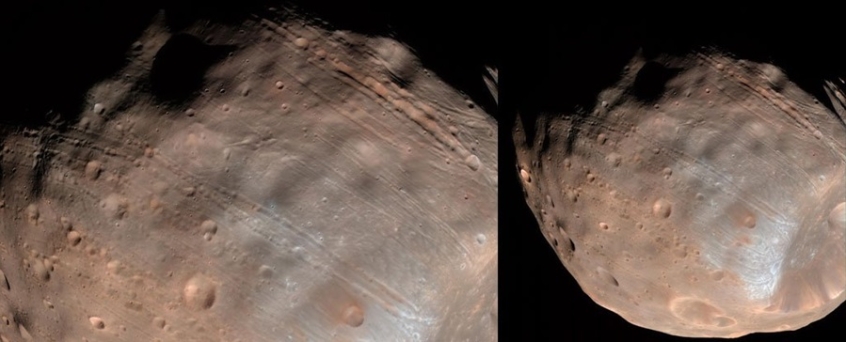
Here on Earth, the moon is a distant astronomical body, seen only at night from miles and miles away.
The same could not be said for Mars. The Red Planet is very close to one of its moons, Phobos—so close that the moon is already being torn apart and will eventually be blown into smithereens.
Space scientists from the National Aeronautics and Space Administration (NASA) recently spotted visible grooves on the surface of Phobos, indicating that the Martian moon is slowly disintegrating.
The space agency said the shallow grooves "are likely early signs of the structural failure that will ultimately destroy this moon of Mars."
Terry Hurford of NASA's Goddard Space Flight Centre in Greenbelt, Maryland attributed Phobos' marked disintegration to stress tidal forces being exerted by Mars on its closest moon.
"We calculate the surface stress field of the de-orbiting satellite and show that the first signs of tidal disruption are already present on its surface," Goddard's team wrote in their study, as quoted by The Daily Mail.
"Most of Phobos' prominent grooves have an excellent correlation with computed stress orientations," the team further said in their study, which will be presented during a meeting of the Geological Society of America.
The study also concluded that Phobos is really vulnerable due to its weak core, which was described as a "'mere rubble pile interior that is nearly strengthless."
It added that Phobos is just held together by a flexible outer layer of dust.
"This outer layer behaves elastically and can experience significant tidal stress at levels able to drive tensile failure," the study stated.
"Fissures can develop as the global body deforms due to increasing tides related to orbital decay," it added.
Goddard's team nevertheless said that Phobos can still survive for a million more years. The researchers also consider the findings on Phobos as quite significant in studying the moons of other planets.















